|
Books Should Be Free Loyal Books Free Public Domain Audiobooks & eBook Downloads |
|
|
Books Should Be Free Loyal Books Free Public Domain Audiobooks & eBook Downloads |
|
Adventure Books |
|---|
|
Book type:
Sort by:
View by:
|
By: Edith Nesbit (1858-1924) | |
|---|---|
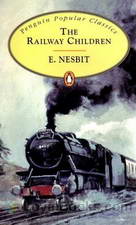 Railway Children
Railway Children
A thrilling spy story, a children's adventure, a charming portrait of early twentieth century life in London and the countryside and a heart warming family tale are all combined in this classic of children's literature The Railway Children by E Nesbit. The book has remained on the list of the best-loved children's books ever since it was first published as a serial story in The London Magazine in 1905. Later, it was published in book form and won acclaim from critics and readers across the world for its wonderful elements of character and plot... | |
 The Enchanted Castle
The Enchanted Castle
A children’s fantasy novel first published in 1907, The Enchanted Castle recounts the marvelous adventures encountered by a curious group of children searching to enliven their summer holiday. Written in episodes, the novel has a different adventure in store for its young heroes in each chapter, including vibrant statues, banquets with Greek gods, and reunited lovers. The novel begins when siblings Gerald, James and Kathleen are required to spend their summer holiday in a boarding school, due to unfortunate events at home and are consequently left under the supervision of a French schoolmistress... | |
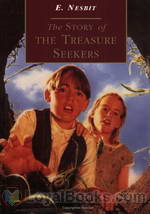 The Story of the Treasure Seekers
The Story of the Treasure Seekers
The six Bastable children are plunged into grief when their mother dies and their father's business partner cheats him of all his money. As a result, he loses not only his fortune but also his good name. However, the children decide to lend a hand. Determined to restore both, the children set out to find some way of making money. A variety of amusing and exciting events follow as they plunge into a series of scrapes in search of a legendary lost treasure. Published in 1899, The Story of the Treasure Seekers by E Nesbit was her first children's novel... | |
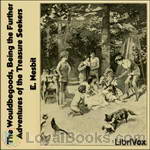 The Wouldbegoods, Being the Further Adventures of the Treasure Seekers
The Wouldbegoods, Being the Further Adventures of the Treasure Seekers
The Bastable children, first met in The Treasure Seekers, are sent to stay in the countryside; is it large enough to contain their exuberant activities? They (and Pincher the dog) have every intention of being good… | |
By: Edward George Bulwer-Lytton (1803-1873) | |
|---|---|
 The Coming Race
The Coming Race
Edward George Earle Lytton Bulwer-Lytton, 1st Baron Lytton (1803-1873) was an English novelist, poet, playright, and politician. Lord Lytton was a florid, popular writer of his day, who coined such phrases as “the great unwashed”, “pursuit of the almighty dollar”, “the pen is mightier than the sword”, and the infamous incipit “It was a dark and stormy night.” Despite his popularity in his heyday, today his name is known as a byword for bad writing. San Jose State University holds... | |
By: Edward Irenaeus Prime-Stevenson (1858-1942) | |
|---|---|
 Left to Themselves
Left to Themselves
Said to be the first-ever gay youth novel, this 1891 story follows the adventures of 12-year-old Gerald Saxton embarking on a trip from New York, to meet his father in Nova Scotia. He is chaperoned by 17-year-old Philip Touchtone. During the trip, their steamer sinks, they are shipwrecked, and marooned on an island. In addition, a shady antagonist is stalking the two. And while all this is happening, a friendship of mutual affection develops between the boys . - Summary by Donald Cummings | |
By: Edward Ormondroyd | |
|---|---|
 David and the Phoenix
David and the Phoenix
David knew that one should be prepared for anything when one climbs a mountain, but he never dreamed what he would find that June morning on the mountain ledge. There stood an enormous bird, with a head like an eagle, a neck like a swan, and a scarlet crest. The most astonishing thing was that the bird had an open book on the ground and was reading from it! This was David’s first sight of the fabulous Phoenix and the beginning of a pleasant and profitable partnership. The Phoenix found a great... | |
By: Edward Phillips Oppenheim (1866-1946) | |
|---|---|
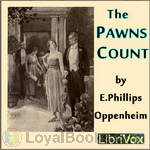 The Pawns Count
The Pawns Count
"I am for England and England only," John Lutchester, the Englishman, asserted."I am for Japan and Japan only," Nikasti, the Jap, insisted."I am for Germany first and America afterwards," Oscar Fischer, the German-American pronounced."I am for America first, America only, America always," Pamela Van Tale, the American girl, declared.They were all right except the German-American.It is during World War I. A chemist, Sandy Graham, has discovered a new powerful explosive, but he let's it slip in a London restaurant that he has made the discovery... | |
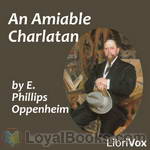 An Amiable Charlatan
An Amiable Charlatan
An Englishman is enjoying his dinner at Stephano's, at which he is a regular diner. A man enters quickly, sits at his table, starts eating his food, and hands him a packet underneath the table! So begins Paul Walmsley's acquaintance - and adventures - with American adventurer Joseph H. Parker and his lovely daughter, Eve. (Intro by TriciaG)Note that there is an alternate reading of section 8. Both are excellent renditions, so enjoy either or both of them. | |
 Great Secret
Great Secret
English gentleman Hardross Courage has a good life. He has all the money he needs, enjoys sports and hunting, manages the family estate, and in general leads a satisfying life. On a trip to London to participate in a cricket match, Hardross is confronted by a man who forces his way into his hotel room imploring him to hide him. His reason - “They want to kill me”. So begins a tale that is likely to change Hardross' idyllic life forever to one of mystery and espionage. | |
 Devil's Paw
Devil's Paw
A beautiful, intelligent young woman – is she a traitorous spy or a patriot? An aristocratic soldier permanently injured during the war – is he a patriot or is there more to him than meets the eye? A clandestine meeting on a beach – espionage or peace movement? | |
 Peter Ruff and the Double Four
Peter Ruff and the Double Four
| |
 Vanished Messenger
Vanished Messenger
A conference of European nations is being held in the Hague. England has not been invited to attend. Some think war is about to break out. Mr. John P. Dunster, an American, is traveling to the Hague with an important document that may prevent the outbreak of war when he mysteriously disappears after a train wreck in England. Richard Hamel is asked by the British government to attempt to solve the mystery of Dunster’s disappearance and prevent the outbreak of war in Europe. | |
By: Edward Stratemeyer (1862-1930) | |
|---|---|
 The Rover Boys on the Ocean
The Rover Boys on the Ocean
The hearty, all-American Rover Boys sail by yacht to Africa in search of their kidnapped father. | |
 The Boy Land Boomer Or, Dick Arbuckle's Adventures in Oklahoma
The Boy Land Boomer Or, Dick Arbuckle's Adventures in Oklahoma
| |
By: Edwin L. Sabin (1870-1952) | |
|---|---|
 Buffalo Bill and the Overland Trail
Buffalo Bill and the Overland Trail
Buffalo Bill Cody is one of the most colorful figures of the early American West. In these adventures we find Billy Cody at age 13 earning a man’s wage as an extra on a wagon train when he meets Davy, two years younger. Together they are in one adventure after another, fighting with Indians, and pressing on to Pike's Peak. They both prove themselves courageous in the face of danger as they ride side-by-side and grow into manhood. - Summary by Larry Wilson | |
By: Egerton Castle (1858-1920) | |
|---|---|
 Pride of Jennico
Pride of Jennico
"The death of a patriarch, unexpected inheritance of a second son, dark and stormy castle, faithful retainers, scary governess who never speaks, star-crossed lovers -- I could go on, but that would involve spoilers! All you'd want and expect from a Gothic romance. One more thing -- real men do cry!" | |
By: Egerton Ryerson Young (1840-1909) | |
|---|---|
 Three Boys in the Wild North Land
Three Boys in the Wild North Land
| |
 Winter Adventures of Three Boys
Winter Adventures of Three Boys
| |
By: Elbridge Streeter Brooks (1846-1902) | |
|---|---|
 Historic Girls
Historic Girls
Twelve short stories of real girls who have influenced the history of their times. | |
By: Eleanor Luisa Haverfield (1870-) | |
|---|---|
 Queensland Cousins
Queensland Cousins
| |
By: Elijah Kellogg (1813-1901) | |
|---|---|
 Lion Ben of Elm Island
Lion Ben of Elm Island
An adventure story for boys, in which the author aims to "impart pleasure, and, at the same time, inspire respect for labor, integrity and every noble sentiment". There is a sense of nostalgia, as Kellogg sets his story in bygone days, when the grandfathers of his readers were mere boys, facing the challenges and perils of frontier life and developing the character needed to transform the wilderness in to the land of freedom and plenty. - Summary by Lynne Thompson | |
By: Elizabeth Gaskell (1810-1865) | |
|---|---|
 Moorland Cottage
Moorland Cottage
"Maggie Brown is torn between her mother who constantly tells her to live for her selfish brother (to whom she gives all her love) to her wish to marry Frank and live for herself. Maggie's plight for independence shows the change in women's role, which started to take place during that time. But it also keeps to the tradition of an almost Cinderella story: the pure woman does the best for everyone but herself and is rewarded for that. In addition, this is a very interesting story, written in Gaskell's remarkable style. When you read it, you are transported to another time, and place". | |
By: Elizabeth Gerberding (1857-1902) | |
|---|---|
 Golden Chimney: A Boy's Mine
Golden Chimney: A Boy's Mine
Ben Ralston regrets that he was born 40 years too late to take advantage of the California Gold Rush. Opportunities are dwindling, but for a boy with drive, they are not extinct. - Summary by Lynne Thompson | |
By: Ellen C. Babbitt (1872-) | |
|---|---|
 More Jataka Tales
More Jataka Tales
The continued success of the "Jataka Tales," as retold and published ten years ago, has led to this second and companion volume. Who that has read or told stories to children has not been lured on by the subtle flattery of their cry for "more"? The Jataka tales, regarded as historic in the Third Century B. C., are the oldest collection of folk-lore extant. They come down to us from that dim far-off time when our forebears told tales around the same hearth fire on the roof of the world. | |
By: Emerson Hough (1857-1923) | |
|---|---|
 Covered Wagon
Covered Wagon
"Look at 'em come, Jesse! More and more! Must be forty or fifty families." This is an old-fashioned adventure tale set on the Oregon Trail, just before the California Gold Rush. It is the story of a wagon train bound for the west, and the conflict which arises due to of a love triangle. Indian fights, buffalo hunts, dangerous river crossings and other dangers of the trail add to a gripping and entertaining yarn. | |
By: Emma Orczy (1865-1947) | |
|---|---|
 The League of the Scarlet Pimpernel
The League of the Scarlet Pimpernel
Written by Baroness Orczy and first published in 1919, The League of the Scarlet Pimpernel is a sequel book to the classic adventure tale, The Scarlet Pimpernel. The book consists of eleven short stories about Sir Percy Blakeney’s exploits in rescuing various aristos and French citizens from the clutches of the guillotine. The stories which are listed below, are set in 1793 but appear in no particular order. They occasionally refer to events in other books in the series. | |
By: Ernest Glanville (1855-1925) | |
|---|---|
 In Search of the Okapi A Story of Adventure in Central Africa
In Search of the Okapi A Story of Adventure in Central Africa
| |
By: Ernest Shackleton | |
|---|---|
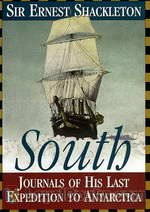 South! The Story of Shackleton's Last Expedition 1914-1917
South! The Story of Shackleton's Last Expedition 1914-1917
The expedition was given the grand title of The Imperial Trans-Antarctic Expedition. Due to be launched in 1914, two ships were to be employed. The first, the lead vessel, fittingly named the Endurance was to transport the team to the Weddell Sea from where the great explorer Ernest Shackleton and five others would cross the icy wastes of Antarctica on foot. The second ship, the Aurora was to approach the continent from the other side and put down supplies at various points to help the explorers... | |
By: Ernest Thompson Seton | |
|---|---|
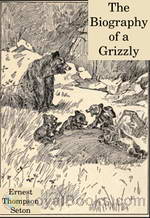 The Biography of a Grizzly
The Biography of a Grizzly
I first read this little book when I was in the fifth grade, and now more than fifty years later, I still find it fascinating. Ernest Thompson Seton was a man with a concern for nature her creatures and an excellent story teller. I could almost feel Wahb, the great grizzly’s pain and frustration as he tried to avoid contact with humans and just be left alone to carry out his bear business. Listening to this audio book will be an hour and a half well spent.Summary by Mike Vendetti, Narrator. | |
By: Ernest William Hornung (1866-1921) | |
|---|---|
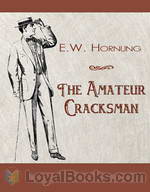 The Amateur Cracksman
The Amateur Cracksman
“I’d tasted blood, and it was all over with me. Why should I work when I could steal? Why settle down to some humdrum uncongenial billet, when excitement, romance, danger and a decent living were all going begging together” – A. J. Raffles, The Ides of March. | |
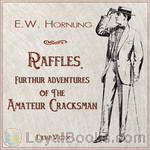 Raffles, Further Adventures of the Amateur Cracksman
Raffles, Further Adventures of the Amateur Cracksman
Raffles, Further Adventures of the Amateur Cracksman (also published as The Black Mask) is the second collection of stories in the Raffles series. After the dark turn of events at the end of The Gift of the Emperor, Bunny’s done his time and, his life not being quite what it was before, now finds himself longing for the companionship of his Raffles. | |
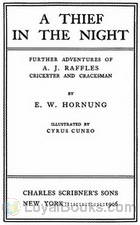 A Thief in the Night
A Thief in the Night
Gentleman thief A.J. Raffles burgles his way through a series of homes in late Victorian England. A Thief in the Night is a short story collection and Hornung's third book in the Raffles series. | |
 Mr. Justice Raffles
Mr. Justice Raffles
A. J. Raffles is a British gentleman thief of some renown who, in this, the hero's final adventure, ironically demonstrates a sense of morality by teaching a London East End loan shark a lesson. The book was later made into a movie, as well as a British television series. | |
By: Erskine Childers (1870-1922) | |
|---|---|
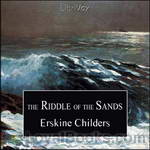 The Riddle of the Sands
The Riddle of the Sands
Containing many realistic details based on Childers’ own sailing trips along the German North Sea coast, the book is the retelling of a yachting expedition in the early 20th century combined with an adventurous spy story. It was one of the early invasion novels which predicted war with Germany and called for British preparedness. The plot involves the uncovering of secret German preparations for an invasion of the United Kingdom. It is often called the first modern spy novel, although others are as well, it was certainly very influential in the genre and for its time... | |
By: Ethel C. Pedley (1859-1898) | |
|---|---|
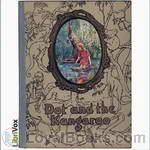 Dot and the Kangaroo
Dot and the Kangaroo
Dot and the Kangaroo, written in 1899, is a children’s book by Ethel C. Pedley about a little girl named Dot who gets lost in the Australian outback and is eventually befriended by a kangaroo and several other marsupials. | |
By: Ethel Twycross Foster (1881-1963) | |
|---|---|
 Little Tales of the Desert
Little Tales of the Desert
A six year-old girl named Mary spends Christmas vacation with her parents in the Arizona desert of 1901 or thereabouts. | |
By: Eugène Sue (1804-1857) | |
|---|---|
 The Mysteries of Paris, Volume 1
The Mysteries of Paris, Volume 1
The Mysteries of Paris (French: Les Mystères de Paris) is a novel by Eugène Sue which was published serially in Journal des débats from June 19, 1842 until October 15, 1843. Les Mystères de Paris singlehandedly increased the circulation of Journal des débats. There has been lots of talk on the origins of the French novel of the 19th century: Stendhal, Balzac, Dumas, Gautier, Sand or Hugo. One often forgets Eugène Sue. Still, The Mysteries of Paris occupies a unique space in the birth of this... | |
By: Evans, A. J. (1889-1960) | |
|---|---|
 The Escaping Club
The Escaping Club
Described by some as one of the greatest escape books published. The Escaping Club recounts Evans' escape to Switzerland from a supposedly "escape-proof" German prison camp during World War I. After repatriation and rejoining the war, Evans again finds himself captured, this time first by Arabs and then by Turks. He again manages to escape. A detailed look at the trials faced by Allied POWs during World War I. | |
By: F. Marion Crawford | |
|---|---|
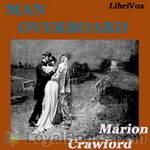 Man Overboard
Man Overboard
Peculiar happenings aboard the schooner Helen B. Jackson when one night during a storm, the small crew found themselves diminished by one. Somebody had gone overboard, and it was surmised that it was one of the twin Benton brothers. But oddly enough, it seemed that the ‘presence’ of the missing twin continued to exist on board during the following weeks. For example, one extra set of silverware was found to be used after each meal, but nobody claimed to be using them. What then did happen that stormy night, and which brother, if indeed it was one of the brothers, was the man who went overboard? | |
By: Ferdinand Schmidt (1816-1890) | |
|---|---|
 Gudrun
Gudrun
The charming story of “Gudrun” is a romance of the old heroic period, written by some unknown poet of Austria or Bavaria in the thirteenth century. Next to the "Nibelungen Lied," it is the most important of the German epic poems...The same elemental passions are depicted. The men are brave, vigorous heroes, rejoicing in battle and feats of prowess; the women are beautiful, constant, and courageous. There are many fine delineations of character in the original, as well as vigorous sketches of northern scenery... | |
By: Florence Finch Kelly (1859-1932) | |
|---|---|
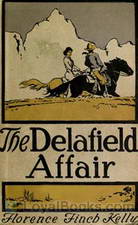 Delafield Affair
Delafield Affair
New Mexico's hot, dry winds are taking their toll: cattle suffer long treks to get food and water. But it is not just a hard time for them. Lucy Bancroft has sought a milder climate so she can recover from typhoid fever. She and her father stop to see Curt Conrad, a rancher, on their way to their new home. The two men discuss politics (some of it crooked) at the state level. they also talk about an easterner, a man named Delafield, who years earlier cheated Conrad's father out of his considerable wealth. Curt has vowed to seek revenge on Delafield if he can ever find the crook. thus begins a harrowing tale of determined search and blossoming love in the hot, dry climate of New Mexico. | |
By: Frances Hodgson Burnett (1849-1924) | |
|---|---|
 Haworth's
Haworth's
The story of an inventor's son, who tries to prevent him and a couple other characters from being taken into poverty by the man of the house who is drinking away the money, while trying to inherit their grandmother's money. - Summary by ej400 | |
By: Frances Trego Montgomery (1858-1925) | |
|---|---|
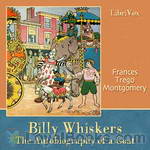 Billy Whiskers, the Autobiography of a Goat
Billy Whiskers, the Autobiography of a Goat
This delightful children's story can be enjoyed by kids and adults alike! A mischievous goat, Billy Whiskers, gets into trouble so often that the book could be named, "Billy Trouble Whiskers"! This humorous story will bring you many chuckles and give you a chance to get lost in Billy's adventures with childlike enthusiasm. From riding in a police car, to being a firehouse mascot, getting married, and finding himself a circus goat, Billy's adventures will certainly keep you entertained! (Introduction by Allyson Hester) | |
 Zip, the Adventures of a Frisky Fox Terrier
Zip, the Adventures of a Frisky Fox Terrier
Zip, a little fox terrier, lives in the town of Maplewood in the house of his owner, Dr. Elsworth. Each day when Dr. Elsworth drives his carriage to visit his patients, Zip goes along with him so that he can keep the doctor company and, most importantly, visit with the other animals in the town. Zip likes to find out all the latest news so that he can tell it to his best friend, Tabby the cat, who also lives with Dr. Elsworth. However, he also finds himself getting into mischief, whether it's trying to solve a burglary, sneaking fried chicken from a picnic, getting stuck in a stovepipe or fighting with Peter-Kins the monkey. Zip is one dog who never has a dull day. | |
 Billy Whiskers Jr.
Billy Whiskers Jr.
This is one of the early Billy Whiskers books where he bears the title, “Junior.” Billy jumps the fence on the farm and heads west for adventures with sheep, wolves, cowboys and Indians, and meets a dog named Stubby who becomes his companion on this and future adventures. - Summary by Larry Wilson | |
 Billy Whiskers at Home
Billy Whiskers at Home
This is one in the beloved series of Billy Whisker books. a lovable goat whose adventures always entertain. Of course, adventure for Billy usually means trouble. From the Brazilian bullfight and butting contests to what happens on Thanksgiving Day, there is always laughter. We won’t even talk about the ginger cookies! But then, Billy can also be a hero, along with his cat and dog friends, Stubby and Button, who save a life. - Summary by Larry Wilson | |
 Billy Whiskers' Travels
Billy Whiskers' Travels
Running away from home is always bound to lead to adventures, some surprising and good and some not so pleasant. Follow Billy Whiskers when he encounters fireworks, tigers and dragons! Will this little goat ever get home again? - Summary by Larry Wilson | |
 Billy Whiskers in France
Billy Whiskers in France
Billy Whiskers is in France, but he is homesick. Of course, he makes new friends and entangles himself in many adventures. He has encounters with nurses, farmers, and a terrible wharf rat. Why is he at a dog cemetery? Why is there a submarine explosion? Join our favorite goat on his adventures in France. - Summary by Larry Wilson | |
 Billy Whiskers at the Fair
Billy Whiskers at the Fair
Who doesn’t love a fair? Billy Whiskers, the mischievous goat sure does! When he leaves Cloverleaf farm his adventures take him to the laughing gallery, the balloon man, the pumpkin man and the fortune teller, and so much more. What does he do on his night with the Duke? - Summary by Larry Wilson | |
 Billy Whiskers Out for Fun
Billy Whiskers Out for Fun
What our mischievous goat, Billy Whiskers and his friends Stubby & Button, think is fun may not be so for everyone else. But, they are off for fun at the fair, in the barnyard, in town, the circus, and even at a bridal supper. Then, what happens with the burglar in the cellar? - Summary by Larry Wilson | |
By: Francis Lovell Coombs | |
|---|---|
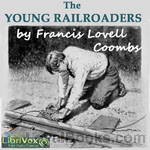 The Young Railroaders
The Young Railroaders
While aimed at youths, this series of tales of the just-opening West makes a rollicking good story for adults, too. Three teen-age boys, trained as telegraphers, manage to get themselves in and out of a wide variety of harrowing circumstances. Using their knowledge of Morse code, the science of telegraphs, and the operation of railroads, the boys stir in native resourcefulness, quick-thinking, and when the occasion demands it, raw courage – to effect rescues, thwart thieves, and solve mysteries. If Tom Swift had lived in the nineteenth century, he could not have had more exciting escapades! | |
By: Francis Parkman | |
|---|---|
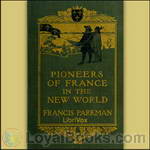 Pioneers of France in the New World
Pioneers of France in the New World
Francis Parkman (1823-1893) has been hailed as one of America’s first great historians and as a master of narrative history. Numerous translations have spread the books around the world. The American writer and literary critic Edmund Wilson (1895-1972) in his book O Canada (1965), described Parkman’s France and England in North America in these terms: The clarity, the momentum and the color of the first volumes of Parkman’s narrative are among the most brilliant achievements of the writing of history as an art... | |
 The Jesuits in North America in the 17th Century
The Jesuits in North America in the 17th Century
Parkman has been hailed as one of America's first great historians and as a master of narrative history. Numerous translations have spread the books around the world. The American writer and literary critic Edmund Wilson (1895-1972) in his book "O Canada" (1965), described Parkman’s France and England in North America in these terms: "The clarity, the momentum and the color of the first volumes of Parkman’s narrative are among the most brilliant achievements of the writing of history as an art... | |
By: Francis Parkman, Jr. | |
|---|---|
 The Oregon Trail
The Oregon Trail
The book is a breezy, first-person account of a 2 month summer tour of the U.S. states of Nebraska, Wyoming, Colorado, and Kansas when Parkman was 23. Proofed and produced by Karen Merline. | |
By: Francis Robert Goulding (1810-1881) | |
|---|---|
 Young Marooners on the Florida Coast
Young Marooners on the Florida Coast
When Robert, Harold, Mary and Frank are cast ashore on a deserted island, they must learn to live off the land in order to survive. With dangerous wildcats, friendly bear cubs, sunken pirate treasure and more, life on the island is never dull - but will they ever see their family again?Although it is now over a century and a half old, this tale of children fending for themselves possesses all the elements of enduring popularity. It has the strength and vigor of simplicity; its narrative flows continuously forward; its incidents are strange and thrilling, and underneath all is a moral purpose sanely put. - Summary by MaxineMarie & SweetPea | |
By: Francis Rolt-Wheeler (1876-1960) | |
|---|---|
 The Boy With the U. S. Fisheries
The Boy With the U. S. Fisheries
| |
By: Frank Benton (1853-1921) | |
|---|---|
 Cowboy Life on the Sidetrack
Cowboy Life on the Sidetrack
Frank Benton, himself a wealthy rancher, provides a series of first-hand sketches of cowboy life of the late 19th and early 20th century from stories gathered from the "sidetrack." These were working cowpunchers with a subculture of their own who did the day-to-day work of the ranches. This is an important part of American history preserved for us in these stories. - Summary by Larry Wilson | |
By: Frank Gee Patchin | |
|---|---|
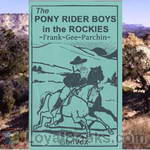 The Pony Rider Boys in the Rockies
The Pony Rider Boys in the Rockies
The Pony Rider Boys in the Rockies is the first book in the 12 part series by Frank Gee Patchin. | |
 The Pony Rider Boys in Texas
The Pony Rider Boys in Texas
Yee-hawww! The Pony Rider Boys are on the trail again! In the second book of this series, Professor Zepplin has taken the young men to San Diego, Texas, to experience the life of a cowboy. The cattle drive will take them across the great state of Texas, where they will meet many dangers and adventures. | |
 The Pony Rider Boys in Montana
The Pony Rider Boys in Montana
Yee-Haaw! The Pony Rider Boys are on the move again! In this book, the 3rd of the series, the boys have decided that they want to explore the north country. They also want to make their own arrangements for the adventure, with the approval of Professor Zepplin, of course! So they have arrived in Forsythe, Montana, to try their luck in the mountains. | |
 Pony Rider Boys in New Mexico
Pony Rider Boys in New Mexico
Yee-Haw!! The Pony Rider Boys are on the move again! This time they are on their way to Bluewater, New Mexico, ready for whatever adventure they can find. But this time, trouble spots them on the train. Will the Pony Rider Boys be able to handle whatever comes their way? | |
 Pony Rider Boys in Alaska
Pony Rider Boys in Alaska
Yee-haw!! The Pony Riders Boys are on the move again! In their last adventure, they are on their way with Professor Zepplin to Alaska. On the "Corsair", they see gold miners on their way to seek their fortune, so the Pony Rider Boys decide to join in the hunt for the yellow metal. But, as always, trouble is not far behind the Pony Rider Boys! (Ann Boulais ) | |
 Pony Rider Boys with the Texas Rangers
Pony Rider Boys with the Texas Rangers
Yee-Haw!! The Pony Rider Boys are on the move again. This time the boys at Delaware Creek, dead in their saddles. They had been riding long and hard into Texas, looking forward to their next adventure. But, trouble finds them once again, this time Stacy Brown may have been shot! What will happen next is anyone's guess. Previous book in the series: The Pony Rider Boys in Grand Canyon Next book in the series: The Pony Rider Boys on the Blue Ridge | |
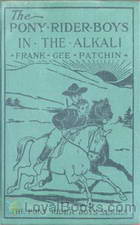 Pony Rider Boys in the Alkali
Pony Rider Boys in the Alkali
Yee-Haww! The Pony Rider Boys are on the move again! This time the boys are in the desert of Nevada, discovering the beauty and perils in 100 degree heat. It should be another thrilling ride that Professor Zepplin has taken them on! | |
 Pony Rider Boys in the Grand Canyon
Pony Rider Boys in the Grand Canyon
Yee-Haaww! The Pony Rider Boys are on the move again. The boys are back home, but as they are chopping wood, it is decided that they need a new adventure out west. Mr. Perkin's, Walter's dad, has suggested the Grand Canyon. So, meeting Professor Zepplin on the way, they set out on the train for Arizona. Previous book in the series: The Pony Rider Boys in New Mexico Next book in the series: The Pony Rider Boys with the Texas Rangers | |
 Pony Rider Boys in the Ozarks
Pony Rider Boys in the Ozarks
Yee-Haw!! The Pony Rider Boys are on the move again! This time the boys are in the Ozark Mountains in Missouri. With Joe Hawk, or Eagle-eye, guiding them, Professor Zepplin and the Pony Rider Boys are sure to find many adventures in this action-packed, fourth book of this series by Frank Gee Patchin. | |
By: Frank H. Spearman (1859-1937) | |
|---|---|
 Nan of Music Mountain
Nan of Music Mountain
| |
By: Frank L. Packard (1877-1942) | |
|---|---|
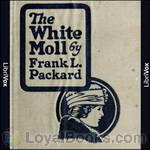 The White Moll
The White Moll
Frank Lucius Packard (February 2, 1877 – February 17, 1942) born in Montreal, Quebec, was a Canadian novelist. Packard is credited with bridging the gap from the “cozy” style mysteries to the more gritty, hard-boiled style of such writers as Dashiell Hammet and Raymond Chandler. Packard also wrote a series of novels, beginning in 1917, featuring Jimmie Dale. A wealthy playboy by day, at night, Jimmie becomes a crimefighter “The Gray Seal” complete with mask and secret hide-out, “The Sanctuary”... | |
By: Frank Norris (1870-1902) | |
|---|---|
 Moran of the Lady Letty
Moran of the Lady Letty
| |
By: Frank Pinkerton | |
|---|---|
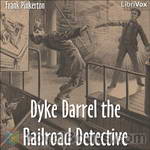 Dyke Darrel the Railroad Detective
Dyke Darrel the Railroad Detective
Dyke Darrel investigates an audacious train robbery that included the murder of a friend, and embarks on a man-hunt. High Victorian serial melodrama at its best! | |
By: Frank Richard Stockton (1834-1902) | |
|---|---|
 A Jolly Fellowship
A Jolly Fellowship
| |
By: Frank V. Webster | |
|---|---|
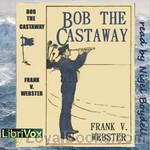 Bob the Castaway
Bob the Castaway
Frank V Webster was a pseudonym controlled by the Stratemeyer Syndicate, the first book packager of books aimed at children. This pseudonym was used on books for boys from the early 1900s through the 1930s.Bob the Castaway follows the antics of young prankster Bob Henderson, his parents futile attempts to get him to mend his ways, and his subsequent nautical adventures. (Introduction by Nigel Boydell) | |
By: Fred M. White (1859-1935) | |
|---|---|
 Mystery of the Ravenspurs
Mystery of the Ravenspurs
The Ravenspurs have for generations resided quietly in prosperity and comfort at their seaside castle. But the clan is suddenly besieged with strange happenings which are dwindling the population of the family to only a few which remain, and those few find themselves in fear of becoming the very last of the powerful family if the cause of their untimely deaths and disappearances is not uncovered soon. It will take a great deal of detective work and a touch of travel to help unravel the mystery of the Ravenspurs. | |
 Doom of London
Doom of London
Here are six stories, each one describing a disaster afflicting London, that were popularly serialized during 1903-1904 in Pearson’s Magazine. The tales depict a deep freeze and unprecedented snowfall; a heavy, blinding, paralyzing blanket of fog; a widespread killer virus; a fraudulent scheme causing financial panic; a minor electrical accident in a tunnel that spirals into catastrophe; and most of the city’s water supply, reportedly contaminated with deadly bubonic bacillus, puts the population in great fear of plague. Is the word “doom” in the book's title accurate, or is it just hyperbole? | |
By: Frederic Stewart Isham (1866-1922) | |
|---|---|
 Under the Rose
Under the Rose
| |
By: Frederick Ferdinand Moore (1877-) | |
|---|---|
 The Devil's Admiral
The Devil's Admiral
| |
By: Frederick Marryat (1792-1848) | |
|---|---|
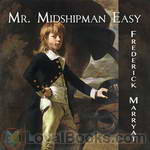 Mr. Midshipman Easy
Mr. Midshipman Easy
One of the first novel-length pieces of nautical fiction, MR. MIDSHIPMAN EASY (1836) is a funny and easygoing account of the adventures of Jack Easy, a son of privilege who joins the Royal Navy. The work begins as a satire on Jack’s attachment to “the rights of man” that may try the listener’s patience. But despair not, for the story soon settles down as the philosophical midshipman begins his many triumphs over bullies, foul weather, and various damned foreigners of murderous intent.Caveat audiens: This novel employs racial/ethnic epithets and religious stereotypes, as well as taking a rather sunny view of supply-side economics... | |
 Masterman Ready The Wreck of the "Pacific"
Masterman Ready The Wreck of the "Pacific"
| |
 The Mission; or Scenes in Africa
The Mission; or Scenes in Africa
| |
 The Pacha of Many Tales
The Pacha of Many Tales
| |
 Travels and Adventures of Monsieur Violet
Travels and Adventures of Monsieur Violet
| |
 Snarleyyow
Snarleyyow
This is a quite amusing nautical tale of the British Navy of the around the year 1700. While, as with much early 'humor', it is somewhat heavy-handed, the sympathies of the author are clear and good, and cruelty is often averted by good fortune or background characters. First published under the title 'The Dog Fiend', the primary characters are an evil captain of a cutter and his dog. The dog seems indestructible, as is the poor cabin boy who is the butt of the captain's ill humor, and who often is chewed on by the dog... | |
 Masterman Ready
Masterman Ready
| |
 The Travels and Adventures of Monsieur Violet in California, Sonora, and Western Texas
The Travels and Adventures of Monsieur Violet in California, Sonora, and Western Texas
| |
 The Pacha of Many Tales
The Pacha of Many Tales
| |
 The Mission
The Mission
| |
By: Frederick O. Bartlett (1876-1945) | |
|---|---|
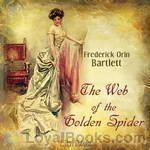 The Web of the Golden Spider
The Web of the Golden Spider
The Web of the Golden Spider is a tale of mystery, intrigue and adventure that begins in the city, progresses to a mutinous open sea voyage, eventually leading to the remotest areas on the slopes of the Andes of South America. Wilson, our hero, finds himself in the midst of a battle between a deposed queen and revolutionists who have banded together in an effort to bring their country together as a republic. Wilson, although torn between helping mercenaries, freedom fighters and revolutionaries, is more concerned with the rescuing of the girl he has fallen in love with, but who has been snatched from him by a mysterious priest... | |
By: Frederik Pohl (1919-2013) | |
|---|---|
 Plague of Pythons
Plague of Pythons
In a post-apocalyptic world where every government in the world has been overrun by its own military machinery, only to see that military machinery self-destruct, people are randomly being affected by a plague that seemingly takes over their brains and forces them to commit heinous crimes. Chandler is one of these unfortunate victims, the perpetrator of rape and murder. He is driven out of his community as a Hoaxer , branded on his forehead with the letter H. But he is not feigning. In his travels, he finds the source of the plague, and it's not what people think. It's up to him to deal with it, and he does. But to what end? - Summary by Nick Bulka | |
By: Friedrich Trenck (1726-1794) | |
|---|---|
 The Life and Adventures of Baron Trenck, Volume 1
The Life and Adventures of Baron Trenck, Volume 1
| |
 The Life and Adventures of Baron Trenck, Volume 2
The Life and Adventures of Baron Trenck, Volume 2
| |
By: G. A. Henty (1832-1902) | |
|---|---|
 In the Hands of the Cave-Dwellers
In the Hands of the Cave-Dwellers
In the Hands of the Cave-Dwellers is a classic adventure where the hero is an American sailor who saves a young Mexican from thugs. The story spreads to an Indian attack, the loss of the heroine to cave dwellers, her rescue, and the eventual happiness of hero and heroine who have overcome adversity. - Summary by Publisher | |
 Tales from the Works of G.A.Henty
Tales from the Works of G.A.Henty
George Alfred Henty was an English newspaper correspondent who became a prolific author of, predominantly, adventure stories for boys. Most were based on true historical events. In this volume, published posthumously, we are presented with thirteen signature stories taken from within his novels. We are taken to India, to Canada, aboard a plague ship and back to Hannibal's army. We confront the Chinese, the Black Death and numerous brushes with death in these gripping tales, which give us a taste of Henty's storytelling mastery. - Summary by Lynne Thompson | |
By: G. K. Chesterton (1874-1936) | |
|---|---|
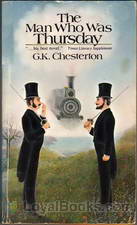 The Man Who was Thursday
The Man Who was Thursday
Two poets in a London park at sunset, debating on the attributes of poetry and whether it's really a metaphor for anarchy. A group that meets in secret, planning to overthrow the world order. Disguises and deceptions, ideals and ideology. A medley of themes and genres makes this a great read for anyone who's a fan of Chesterton and his iconic Father Brown. The Man Who Was Thursday includes Chesterton's favorite theme of Christianity with touches of delightful humor to enliven the twists and turns that abound throughout the book... | |
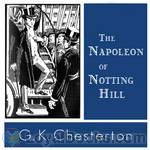 The Napoleon of Notting Hill
The Napoleon of Notting Hill
While the novel is humorous (one instance has the King sitting on top of an omnibus and speaking to it as to a horse: “Forward, my beauty, my Arab,” he said, patting the omnibus encouragingly, “fleetest of all thy bounding tribe”), it is also an adventure story: Chesterton is not afraid to let blood be drawn in his battles, fought with sword and halberd in the London streets, and Wayne thinks up a few ingenious strategies; and, finally, the novel is philosophical, considering the value of one man’s actions and the virtue of respect for one’s enemies. | |
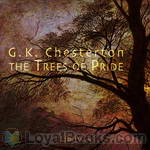 The Trees of Pride
The Trees of Pride
Three trees, known as the Peacock trees, are blamed by the peasants for the fever that has killed many. Squire Vane scoffs at this legend as superstition. To prove them wrong, once and for all, he takes a bet to spend the night in the trees. In the morning he has vanished. Is he dead, and if so who has killed him? The poet? The lawyer? The woodsman? The trees? | |